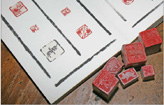Society
Sleep position may affect stillbirth risk
Updated: 2011-06-15 11:30
(Agencies)
LONDON - Women who do not sleep on their left side on their last night of pregnancy have double the risk of late stillbirth compared with women who do sleep on their left side, according to a study from New Zealand.
The researchers who conducted the study said women should not worry because the increased risk is still very small - the chance of the baby being stillborn rises to 3.93 per 1,000 for those who don't sleep on their left from 1.96 per 1,000 for those who do.
A significant link was also found between sleeping regularly during the day, or sleeping longer than average at night, and late stillbirth risk, the researchers said.
Tomasina Stacey of the department of obstetrics and gynaecology at the University of Auckland, whose study was published in the British Medical Journal (BMJ), suggested that restricted blood flow to the baby when the mother lies on her back or right side for long periods may explain the link.
But she said the findings, which were based on a relatively small number of women, needed to be confirmed by larger, more detailed studies before any public health advice could be given.
"It's a new hypothesis and means we should start to look at this problem much more closely. It's really a starting point for future research," Stacey said in a telephone interview.
If the findings were confirmed, they might offer a simple, cheap and natural way to cut the number of stillbirths, she said. "It's something that's very easily modifiable. You don't need to take any drugs and there are no side effects."
A series of studies led by researchers from the World Health Organisation and published earlier this year found that more than 2.6 million pregnancies a year end in stillbirth, many of them among women in poor countries. This means that every day more than 7,200 babies are stillborn.
Stacey's team interviewed 155 women in Auckland who gave birth to a stillborn baby between July 2006 and June 2009 when they were at least 28 weeks pregnant. These women were compared to a control group of 310 women with ongoing pregnancies.
The women were asked detailed questions about their sleep positions, and about going to sleep and waking up before pregnancy and in the last month, week, and night before they believed their baby had died.
They were also asked about snoring, daytime sleepiness, whether they regularly slept during the day in the last month of pregnancy, the duration of their sleep at night, and how many times they got up to the toilet at night.
The results showed no link between snoring or daytime sleepiness and risk of late stillbirth. But a significant link was found between daytime sleeping, or sleeping longer than average at night, and late stillbirth risk.
Women who slept on their back or on their right side on the last night of pregnancy were also more likely to experience a late stillbirth, and women who got up to go to the toilet once or less on the last night were also more likely to experience a late stillbirth compared with women who got up more frequently.
In a commentary on the study in the BMJ, Lucy Chappell, lecturer in maternal and foetal medicine from King's College London, said "any simple intervention that reduces the risk of stillbirth would be extremely welcome".
But she said the results should be interpreted with caution until more work is done: "A forceful campaign urging pregnant women to sleep on their left side is not yet warranted."
E-paper

Pearl on the Yangtze
Wuxi is considered a town of natural beauty and its motto is "city of water and warmth".
Prose and consternation
Riding on a mystery train
Way of a warrior
Specials

When two are one
After a separation of 360 years, Huang Gongwang's famous Dwelling in the Fuchun Mountains has been made whole again.

Wealth of difference
Rich coastal areas offer contrasting ways of dealing with country's development

Seal of approval
The dying tradition of seal engraving has now become a UNIVERSITY major
